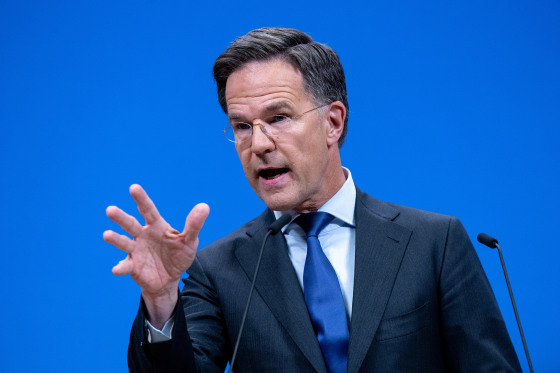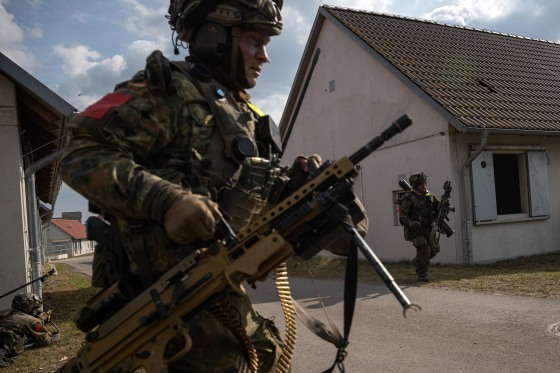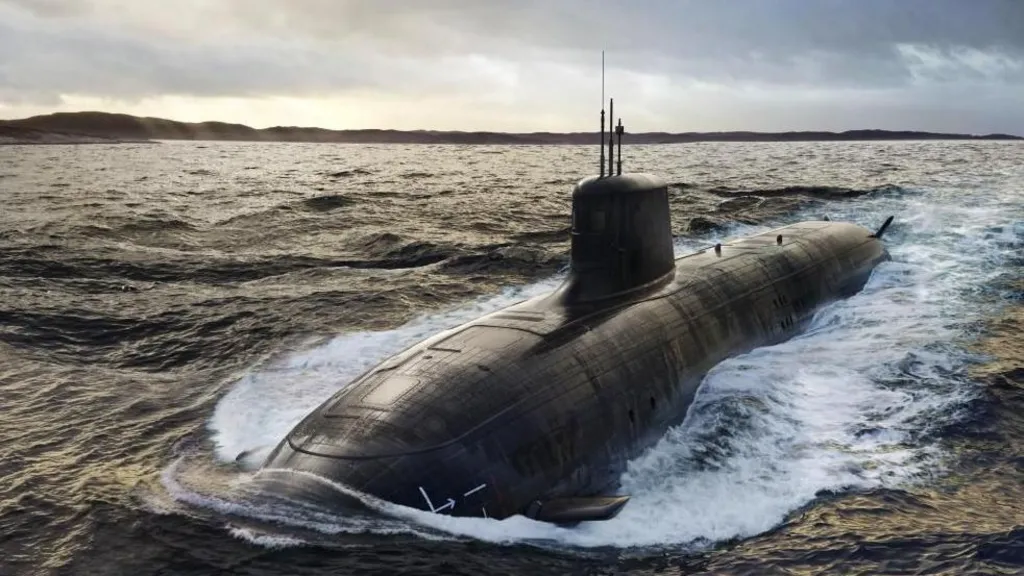NATO Countries Speedily Arming to Contest Russia's Territorial Aggression
 |
| NATO Secretary General Mark Rutte Getty |
"[Russia is outpacing the far bigger NATO in producing ammunition, and the alliance must take a] quantum leap [in collective defence]."
"Wishful thinking will not keep us safe. We cannot dream away the danger. Hope is not a strategy. So NATO has to become a stronger, fairer and more lethal alliance."
"We see in Ukraine how Russia delivers terror from above, so we will strengthen the shield that protects our skies. Russia could be ready to use military force against NATO within five years"
"We are all on the eastern flank now."
NATO Secretary-General Mark Rutte

The head of the NATO military alliance, speaking during a visit to London, stated that NATO members must increase air and missile defences by 400 percent to enable the alliance to counter Russia's threat to its members in its drive to expand its territory. Russia's territorial aggression must be recognized for what it is; a dire threat to democracy and to the sovereign reality of NATO member states. The very existence of the military alliance is a red flag for Moscow and Russian President Vladimir Putin would like nothing better than to destroy its integrity and purpose of existence.
Secretary-General Rutte warned NATO's 32 member-states that Moscow is preparing for a massive attack within the next five years. He spoke of an expectation that under these circumstances alliance members should be prepared to express agreement to a huge increase in military spending, and to agree to each make good on that expectation through a promissory note of expression at the NATO summit set to take place this month in the Netherlands.
 |
His proposal hovers in the target range of 3.5 percent of economic output to be spent on military upgrades, and another 1.5 percent on "defence-related expenditure" such as roads, bridges, airfields and sea ports. He has confidence that the target will be agreed to at the NATO summit in The Hague on June 24 --25. Currently 22 of 32 members have met or have exceeded the current two percent NATO target, originally set in 2014.
U.S. President Donald Trump has demanded that member states firmly commit to spending 5 percent of gross domestic product on defence, having long questioned the value of NATO, while pointing out that the United States provides security to European countries which fail to contribute sufficiently on their own. "America has carried too much of the burden for too long", Rutte agreed.
 |
Thousands more armoured vehicles and millions more artillery shells, along with a 400 percent increase n air and missile defence is required, Rutte outlined in his talk. The Secretary-General praised the commitment recently revealed by Prime Minister Keir Starmer to pump up defence spending in his pledge to increase military output to 2.5 percent of GDP by 2027, and to 3 percent by 2034.
Since Russia's full-scale invasion of Ukraine in February of 2022, the U.K., like other NATO members has been reassessing its defence spending. Led by the U.K. and France, European NATO members have rushed to co-ordinate their defence posture even as President Trump appears to sideline Europe while transforming American foreign policy.
The U.K. government last week stated it planned to build new nuclear-powered attack submarines in preparing its military to fight a war in Europe, becoming "a battle-ready, armourclad nation". The most sweeping changes to British defences in over three decades, since the collapse of the Soviet Union.
 |
| An illustration of what an SSN-AUKUS submarine will look like PA Media |
Labels: 32 Alliance Members, Defence Spending, NATO, Russian Invasion of Ukraine, Russian Territorial Aggression
0 Comments:
Post a Comment
<< Home